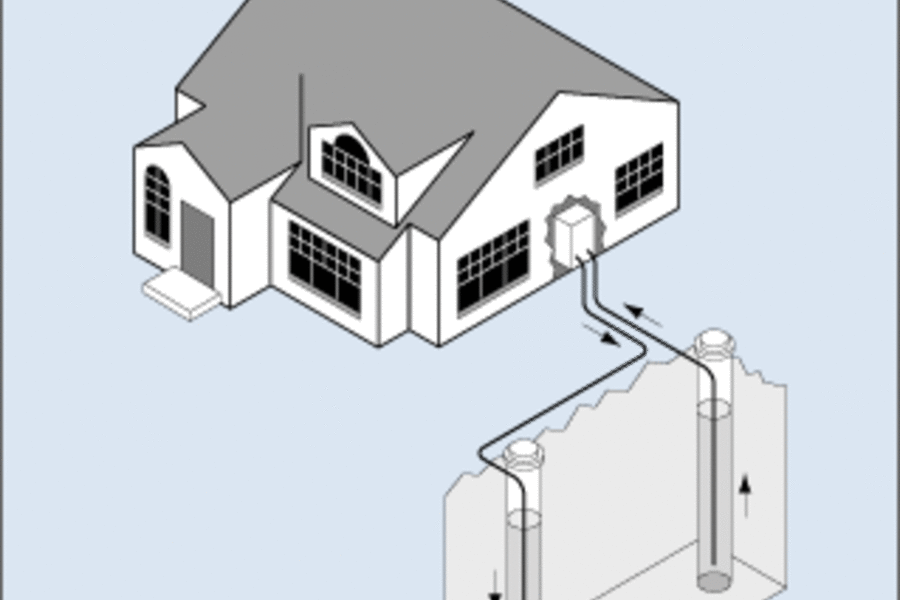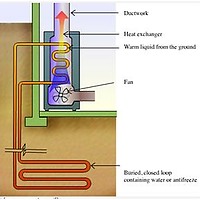Considering the need of green sources of energy and the importance of water inside The Building, the idea of exploiting a geothermal heating system came straightforward.
In particular, according to Netherland geographical features, the decision of using a system of open loop heat pumps seemed the most appropriate. Open loop systems differ from closed ones as the water doesn’t keep circulating in a closed circuit of pipes, but it’s continuously exchanged with a water reservoir present underneath the ground.
OPEN LOOP HEAT PUMPS -> EXCHANGE OF WATER WITH A RESERVOIR
The soil needs to be studied in order to perform this water exchange not to impoverish it; moreover, the depth needs to be calibrated for obvious reasons. Finally, open loops geothermal systems are “practical only where there is an adequate supply of relatively clean water, and all local codes and regulations regarding groundwater discharge are met” (energy.gov).
This system looks suited for Netherland, since saline water is abundant below the ground. From the data shown by the Water Group, the depth at which water is found, i.e. piezometric level, is almost zero in Delft.
Geothermal heat pumps have a high Coefficient of Performance, meaning that they give back more energy than the electrical one they were given: depending on the season and therefore on ground temperature, they give from 3 to 5 times the energy put in input.
1 UNIT OF ELECTRICITY -> 3 TO 5 UNIT OF HEAT <--> 10 TO 16 °C EARTH TEMPERATURE
Heat pumps are however not too suited for providing electrical energy: transforming heat energy back to electric, only a 30% efficiency is obtained; the gain would be then close to zero considering the energy already given for its functioning.
Need for precise calculations arise for spatial organization of the pumps themselves and of their engines which will be placed above the ground.



